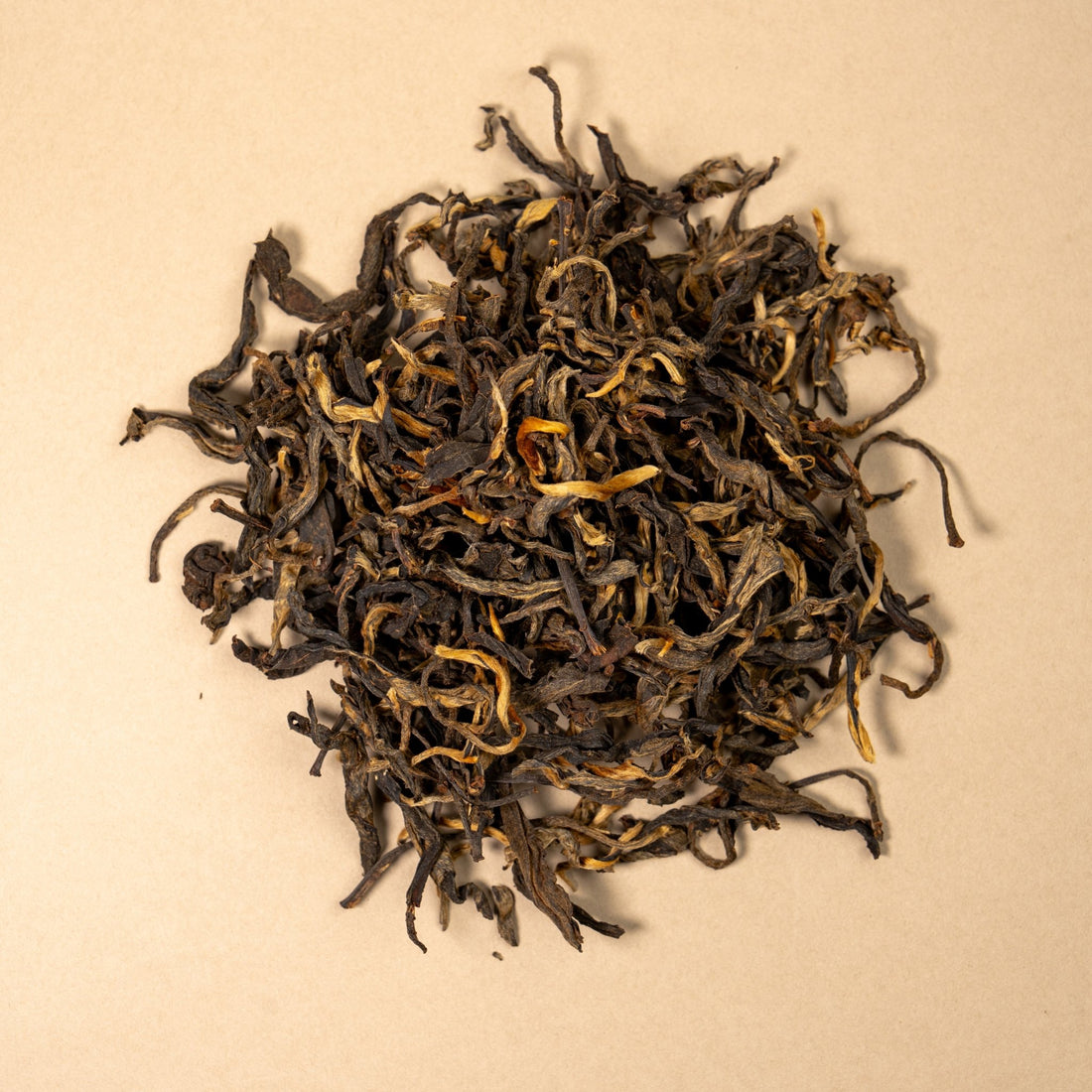
What Is Black Tea? The Story of China’s Fully Fermented Treasure
Key Takeaways
- Black tea, also called "fully fermented tea," is defined by its red liquor and red leaves, produced through withering, rolling, fermentation, and drying.
- Its origin traces to a 17th-century accident in Wuyi Mountain: soldiers camping on fresh tea leaves triggered fermentation, leading to the creation of "Zhengshan Xiaozhong" (Lapsang Souchong), the first black tea.
- High-quality black tea features a sweet, mellow taste with floral or fruity notes, avoiding bitterness when brewed correctly.
- Brewing tips: Use a pre-warmed covered bowl, 85-95°C water, gentle pouring, and immediate decanting to preserve sweetness.
What Is Black Tea? The Story of China’s Fully Fermented Treasure
Black tea, with its warm hue and soothing sweetness, is one of the most beloved teas worldwide. Unlike green tea (unfermented) or oolong (semi-fermented), black tea undergoes full fermentation, giving it a rich character that’s gentle yet satisfying. Let’s explore its origins, craftsmanship, and how to brew the perfect cup.
1. Origins: A Happy "Accident" in Wuyi Mountain
Black tea’s story begins in the late Ming Dynasty (17th century) in Tongmuguan, Wuyi Mountain. Legend has it that an army, exhausted from a long march, camped in a local tea factory and slept on fresh tea leaves. When tea farmers returned the next day, they found the leaves had turned dark red due to fermentation (a natural reaction to moisture and heat).
Unwilling to waste the crop, the farmers smoked the fermented leaves over pine wood and dried them. The result? A bold, aromatic tea with a unique smoky sweetness that quickly gained popularity. This was the birth of "Zhengshan Xiaozhong" (Lapsang Souchong), the world’s first black tea. From this accident, a global tea tradition was born.
2. What Makes Black Tea "Black"? The Full Fermentation Process
Black tea’s distinct red color and mellow taste come from full fermentation—a key step that sets it apart:
- Withering: Fresh leaves are spread to lose moisture, softening them for rolling.
- Rolling: Leaves are twisted to break cell walls, releasing enzymes that kickstart fermentation.
- Fermentation: The most critical step. Leaves are stored in humid conditions, where enzymes react with oxygen, turning them from green to dark red and developing sweet, fruity, or floral compounds.
- Drying: Fermentation is stopped by heating, locking in flavor and reducing moisture for storage.
This process transforms the leaves, making black tea less astringent than green tea and richer in depth.
3. Quality Traits: How to Recognize Great Black Tea
High-quality black tea shines through its appearance, aroma, and taste:
- Dry Leaves: Dark brown to black, with a glossy sheen; some varieties (like Zhengshan Xiaozhong) may have a subtle smoky aroma.
- Liquor: Bright red to amber, clear and vibrant—often described as "red soup" .
- Taste: Sweet, mellow, and smooth, with notes of honey, dried fruit (like raisin), or flowers (like rose). Unlike over-brewed tea, it should never taste harsh or bitter when prepared correctly.
4. Brewing Black Tea for Sweetness (Not Bitterness)
Black tea’s gentle nature thrives on careful brewing. Follow these steps from "How to Brew a Sweet and Fragrant Cup of Black Tea":
- Warm the teaware: Use a covered bowl (gaiwan). Rinse it with hot water to heat it, then add tea leaves and gently shake to release their initial aroma—this awakens the tea’s sweet notes.
- Control water temperature: Use 85-95°C water. Too hot (over 95°C) can make the tea taste sour; too cool weakens its flavor.
- Pour gently: Pour water along the edge of the teaware to avoid harshly agitating the leaves—this keeps the tea soft and sweet.
- Don’t steep: After pouring water, decant the liquor immediately. Leaving leaves in water too long releases tannins, causing bitterness.
5. Why Black Tea Wins Hearts Worldwide
Black tea’s popularity stems from its versatility:
- It’s gentle on the stomach, making it ideal for morning or evening sipping.
- Its mild sweetness pairs well with milk, honey, or pastries (think English breakfast tea with milk).
- It’s easy to brew, even for beginners, and travels well—perfect for busy lifestyles.
From its accidental birth in Wuyi Mountain to its place in teacups worldwide, black tea is more than a beverage—it’s a story of tradition and adaptability. Brewed right, it offers a moment of warmth in every sip.
